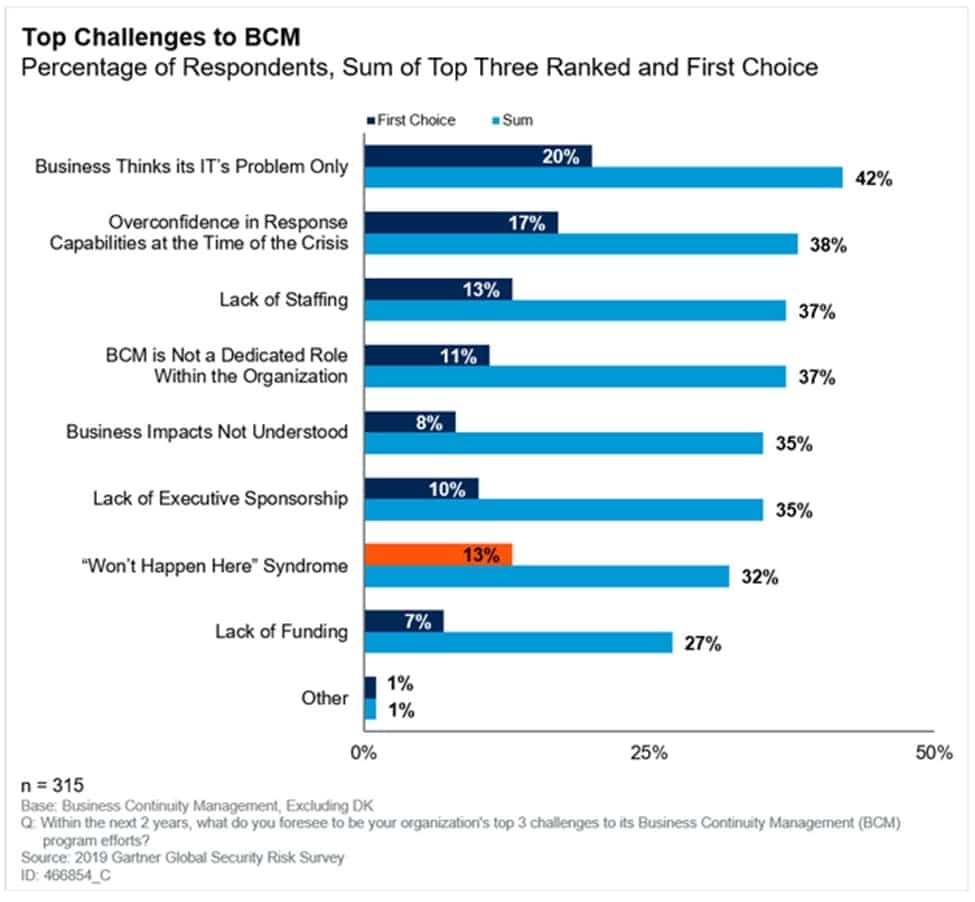- Blog
- How will our approach to Business Continuity now change?
How will our approach to Business Continuity now change?
Considering the amount of uncertainty in both our personal and business careers, it’s difficult to focus enough to identify the most pressing issue. One thing that is emerging globally is a need to get back to some normality even if it requires some compromises.
Risk assessment is key – both personally and in business
Either consciously or unconsciously, we have conducted our own personal risk assessment and based on our level of acceptable risk are figuring out how to move forward. As an ER doctor friend of mine recently said, it really comes down to your risk tolerance.
Businesses are different in that they have a broader set of liabilities, and consequently the risk assessment is more complex. However, one thing is common both on a personal and business level—we should only concentrate on the things we can control. This, I sense, is where many organisations now are; this is likely to be the new normal for a longer period of time than originally anticipated.
Old vs. new “Business Continuity” planning
Prior to the current crisis, business continuity planning was very much formed around the occurrence of the 9/11 type event. Whereby an alternative physical location would be required to maintain continuity. Disaster recovery was thought about in terms of weeks rather than in months.
As recently as February though, Gartner published the results from a survey asking 315 respondents to list the top three challenges to their Business Continuity program efforts. As chart below summarises, the results are quite revealing.


It seems back in February most respondents either thought it was IT’s problems or they had it under control. Clearly what we have learned over the last few months is that we were not 100% prepared for a disruption of this nature or, indeed, for it to last longer than a few weeks. As the Gartner survey suggests, our responses have been siloed and ad hoc.
Just under a month later Gartner, published a response to Covid-19 for Shared Service leaders suggesting that we need to address these shortcomings and assume a new normal. Specifically, the report calls out the following actions:
-
C-level ownership with cross functional teams
-
Business continuity plans will need to be created with new assumptions
-
Also assume multiple geographies will be impacted, not just one
-
Accounting teams will have to invest in remote working
-
Create environments for shared service functions
It’s important to point out that this crisis has really exposed how interconnected the supply chain has become. I would add to this list the need for better visibility into 1st,2nd and even 3rd tier activity. I would also add representation from key strategic suppliers to help formulate a more interconnected BCP.
Find more ways to mediate disruption
Learn more about how Basware can help organisations negotiate the rough waters of business disruption and check out our dedicated resource hub.
Related
-
By Martti NurminenFrom the Office of the CFO: The Path to Touchless Invoice Processing – A Perspective and Lessons from Basware's Own AP Automation Journey
-
By Basware RepresentativeAccelerate Your Business Growth with Basware AP Automation: Fast Track to Value
-
By Basware RepresentativeUnveiling CFO Strategies for Long-Term Value Creation – Webinar Insights
-
By Anu HämäläinenUnlocking the Power of AI in Finance: A Dive into Invoice Ingestion Revolution
-
By Christopher BlakeComplexity to Clarity: Forrester's Expert Take on AP Invoice Automation
-
By Anu HämäläinenThe Evolution from OCR: It's Time for a Change
-
By Christopher BlakeChoosing AP Excellence: Finding the Right Solutions Amid S2P Suite Challenges
-
By Basware RepresentativeUnlock the Power of Invoice Digitalization: Watch Our On-Demand Webinar Now!

